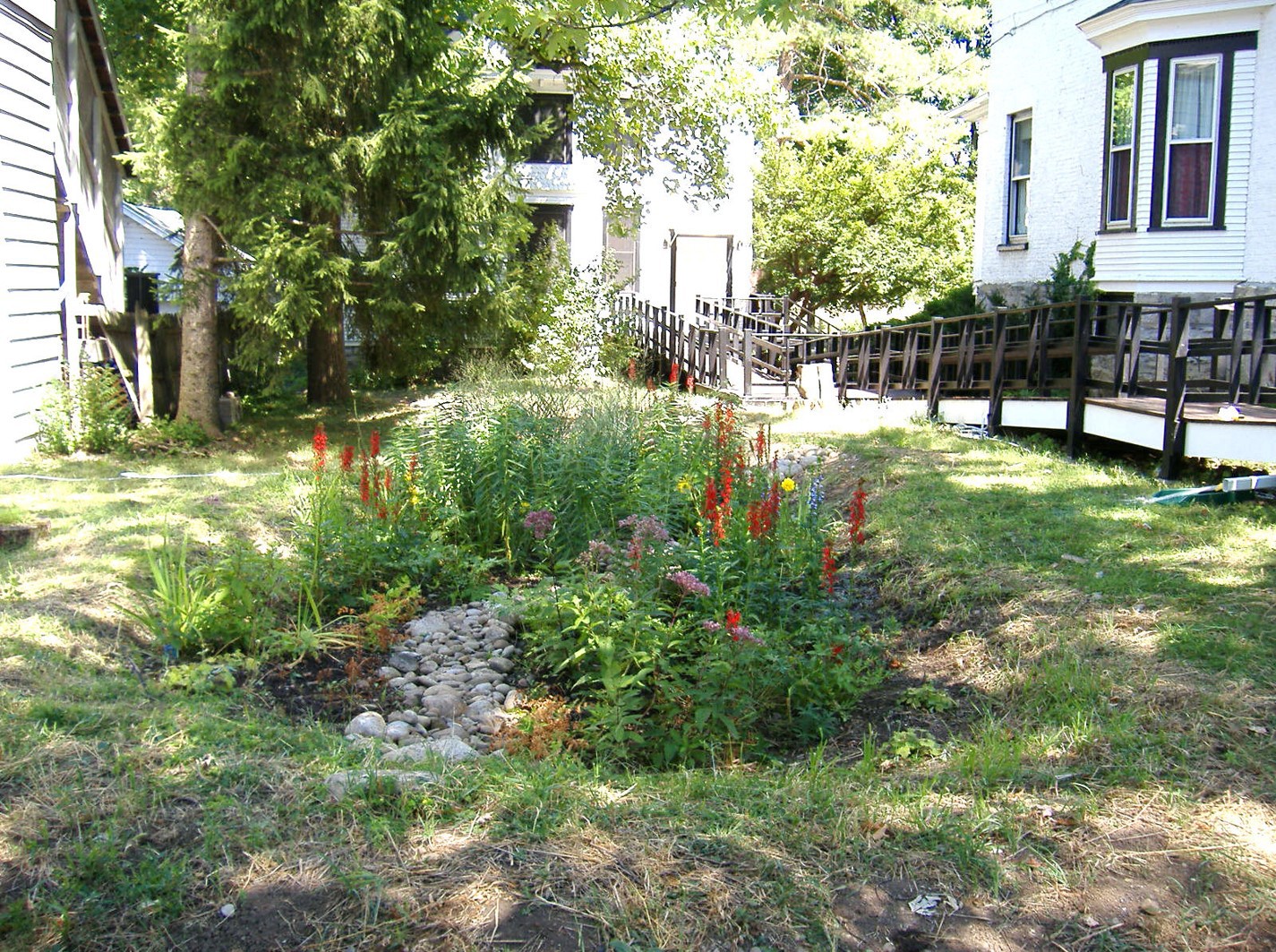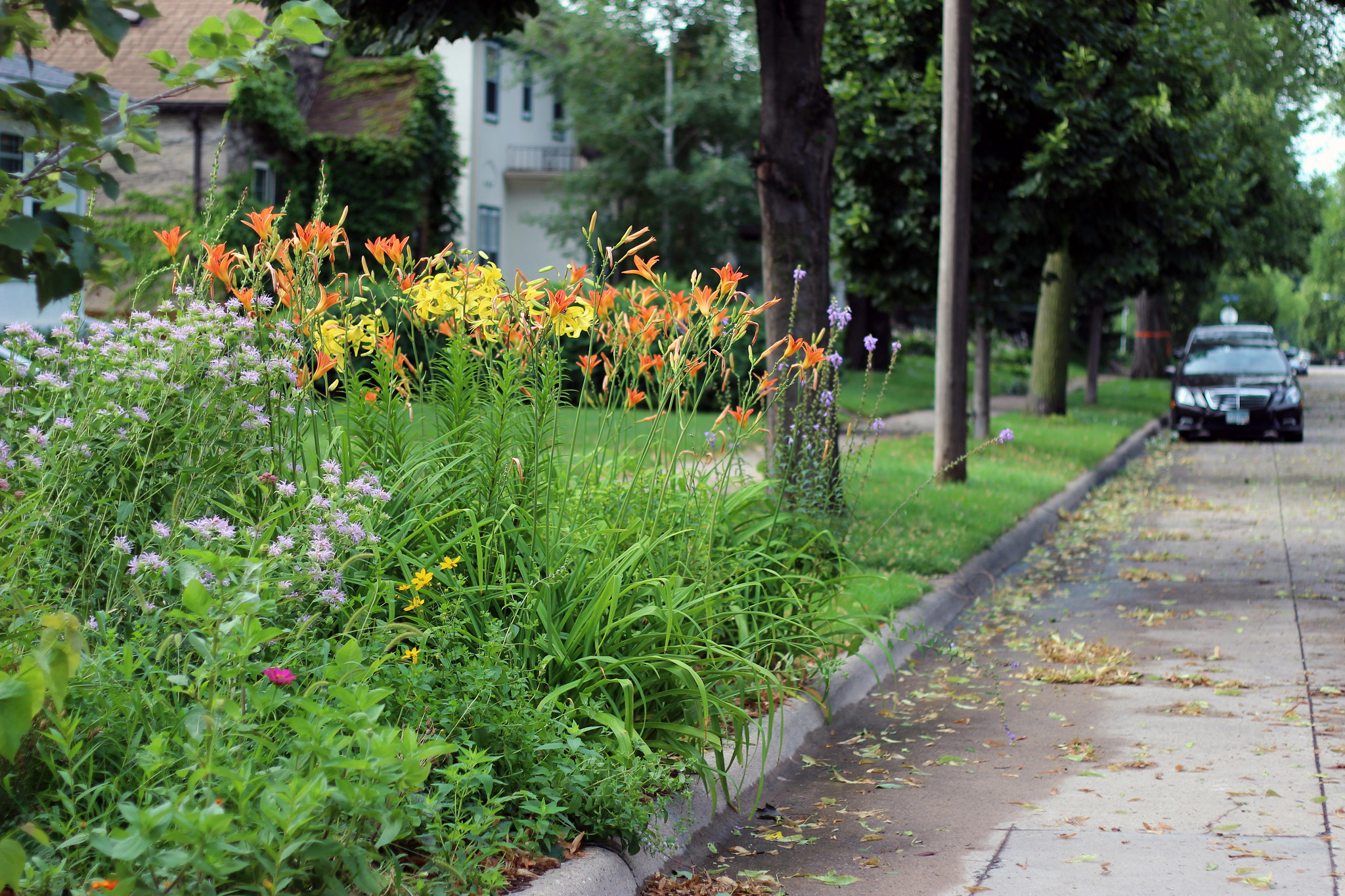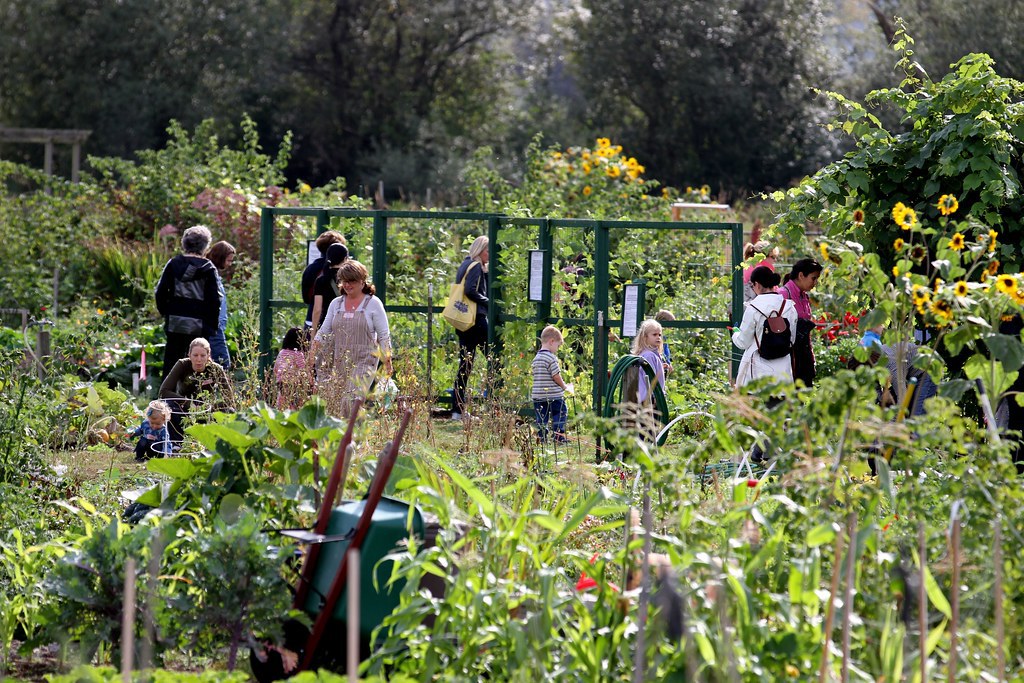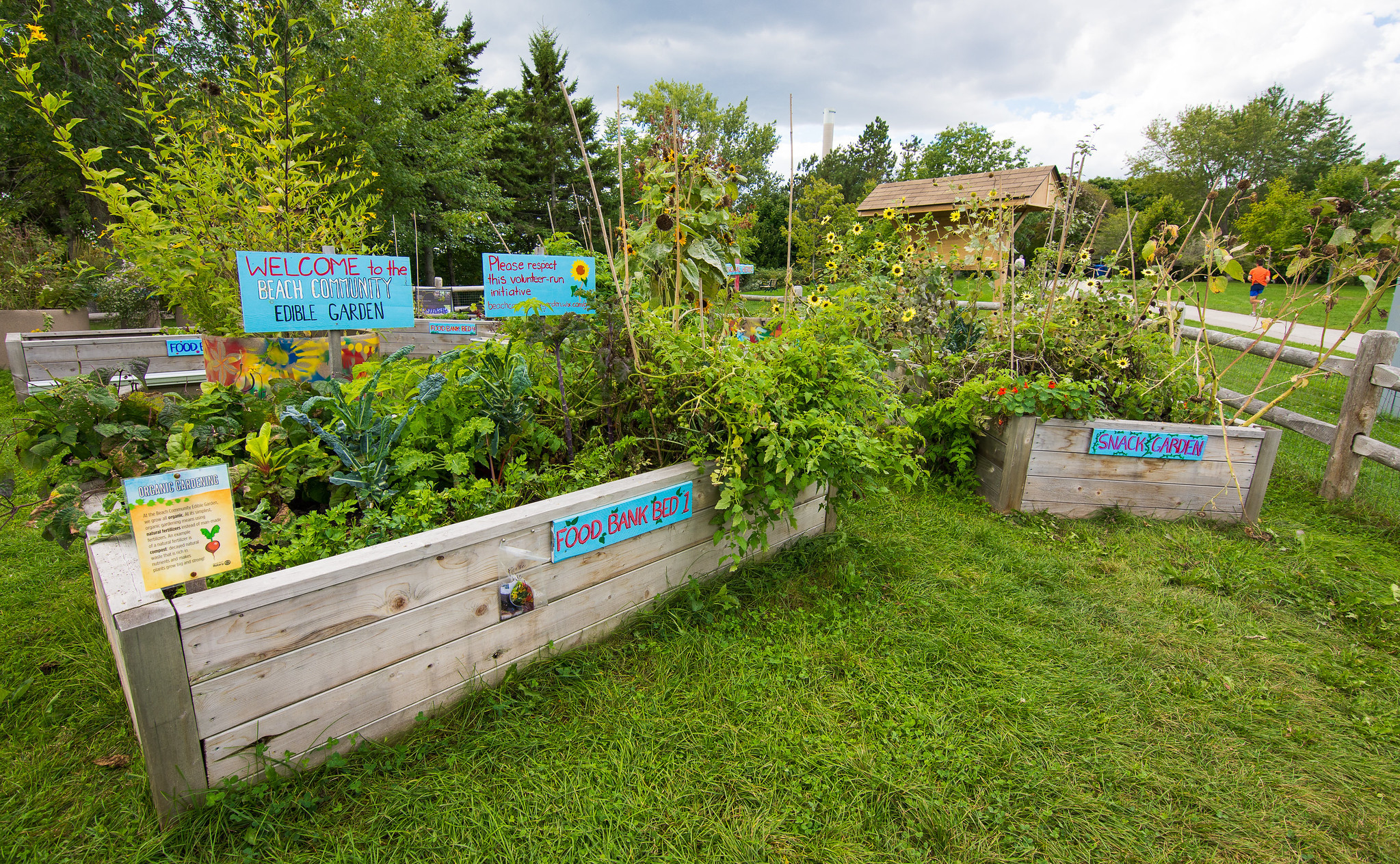Photo: USFWS Midwest Region via Flickr.
We all know the benefits of a back or front yard food garden. Food grown yourself is nutritious and fresh, and it lessens the need to buy food shipped from faraway places. But there are more types of gardens and landscaping approaches that have other community, ecosystem, and food system benefits. Here are a few ideas to consider.

Rain garden in Ithaca, N.Y.; courtesy of Rain Garden Network.
Rain gardens
A rain garden is designed to divert and filter storm water that flows from downspouts and impermeable surfaces into the ground rather than in storm drains. This helps keep pollutants from draining into local bodies of water and filters and delivers water into the landscape instead. By planting native plants with deep roots in an area that will catch rainwater, you will help keep waterways cleaner, reduce mosquito breeding, create new habitat for birds & butterflies, and reduce erosion and flash floods. Learn more at groundwater.org and Rain Garden Network.

Photo: USFWS Midwest Region via Flickr.
Pollinator gardens
Pollinators are responsible for 1 out of 3 bites of food we take each day, according to the National Pollinator Garden Network. Loss of habitat and pesticide use are having drastic effects on pollinator population levels and health. Designing a garden that supports butterflies, bees, and hummingbirds can help counter these losses, plus they look great. Effective pollinator gardens incorporate a variety of native, flowering plants, as well as “host” plants, which are plants that certain butterflies lay their eggs on. To get started, contact your local garden club or even zoo, or visit millionpollinatorgardens.org.

Photo: King County Parks via Flickr.
Shared and Community Gardens
If you don’t have space or even a yard to garden, look for a community garden nearby to join. Most community gardens offer plots to rent; others may take a more communal approach. Either way, you will be able to connect with the community and share ideas. You can search for community gardens in your area at communitygarden.org. In some areas, community gardens have become so popular that there are long waiting lists. In that case, you may be able to start a new community garden, or look into sharing a garden with a neighbor — Shared Earth can help you find a match.

Photo: The Beach Community Edible Garden includes a food bank bed. Viv Lynch via Flickr.
Donation Gardens
A variation on a community garden, a donation garden is a vegetable garden that is planted with the intention to donate the harvested food to a food bank or other hunger relief organization. You can plant your own donation garden at home, or start one that your community can work on together, like this one in Oklahoma City. And even if you don’t plant an entire donation garden, food pantries food rescue groups are always thankful for fresh produce donations. Connect with groups in your area through our Food Rescue Locator or Ample Harvest.
Unlawning Your Lawn
If you have a lot of lawn, but don’t have the time or interest in maintaining a garden, you might consider “unlawning,” i.e. not mowing, part of your lawn that you don’t use for recreation. By simply not mowing or treating part of your lawn, you can save time, reduce lawn mower fuel use, reduce air, water and noise pollution all while increasing habitat for beneficial pollinators, insects, and wildlife. It doesn’t have to look like an unkempt mess, either. Check out Brian Collier’s strategies for unlawning for ideas. If you’d like to be more intentional with transforming your lawn, you can take out the lawn and plant prairie or meadow plants native to your area.
Rooftop Gardens
A rooftop garden, or green roof, can be as simple as growing plants in containers or a small raised bed to a big project that converts an entire roof to green space. Benefits include improved storm water management, energy conservation, carbon sequestration, reduced air pollution, increased biodiversity, and — if you grow vegetables — fresh food to eat. If you have a bare roof or balcony, see if there are some ways to put it to use — the video above is a good start. Or, here’s a bigger living roof project plan from This Old House.
